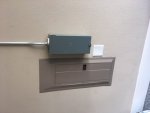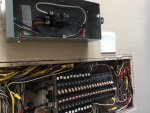Smartcharge512
Member
- Location
- Austin, TX, US
Hi, brand new to forum
I work for an EVSE installation company. We only install car charging systems in commercial and residential. My predecessor manager implemented into our company, using line/supply side piercing taps before the main disconnect or main breaker, and feeding a fusible 2 space breaker enclosure and providing the appropriate size breaker to then feed our EVSE.
We've never been corrected on this until recently on a job out of town, inspector quoted article 240.21 "you can't tap a tap"
Are we doing this incorrect ? It's has been the fastest way for us to install our evse, in full panels. Without just setting a sub panel and relocating circuits also where installing more tandems isn't allowable.
Can someone also tell me how to add a picture for ex. Off an iPad ??
I work for an EVSE installation company. We only install car charging systems in commercial and residential. My predecessor manager implemented into our company, using line/supply side piercing taps before the main disconnect or main breaker, and feeding a fusible 2 space breaker enclosure and providing the appropriate size breaker to then feed our EVSE.
We've never been corrected on this until recently on a job out of town, inspector quoted article 240.21 "you can't tap a tap"
Are we doing this incorrect ? It's has been the fastest way for us to install our evse, in full panels. Without just setting a sub panel and relocating circuits also where installing more tandems isn't allowable.
Can someone also tell me how to add a picture for ex. Off an iPad ??
Last edited:



